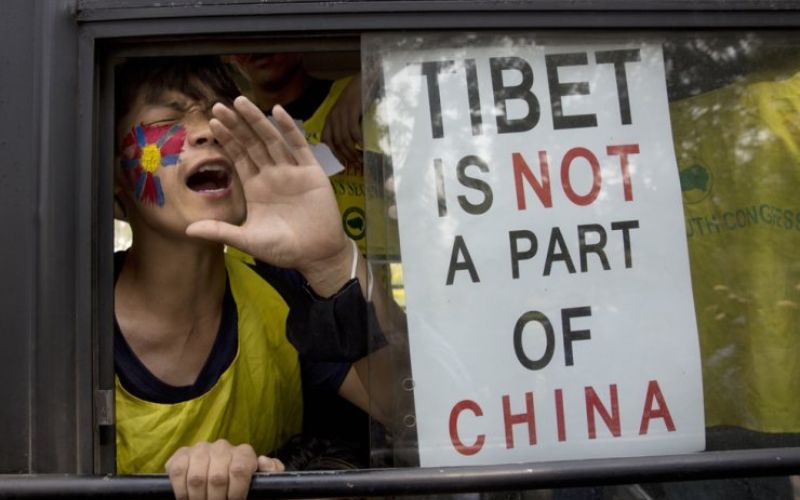
The China News Agency (CNA) report on human rights in Tibet and Xinjiang presents a one-sided narrative, riddled with propaganda and misinformation. Relying heavily on testimonials from individuals affiliated with state institutions, it paints a rosy picture that blatantly ignores the lived realities of Tibetans and Uyghurs.
The ultimate goal of this misinformation campaign is to legitimize the Chinese government's policies in Tibet and Xinjiang, deflecting international criticism and silencing internal dissent. It aims to create a reality where human rights concerns are dismissed as Western fabrications and the government's narrative reigns supreme.
“China is very aware of the strength of the movement for Tibet’s freedom. Inside Tibet, it uses repression and violence to try to silence that movement. Outside of China, it uses propaganda”, noted rights group Free Tibet based in UK.
The CNA report conveniently focuses on economic indicators like GDP, while neglecting fundamental human rights issues like religious freedom, cultural autonomy, and political participation. Independent reports by Human Rights Watch, Amnesty International, and the UN Human Rights Office paint a starkly different picture, highlighting severe restrictions on religious practices, mass surveillance, and cultural assimilation policies.
According to recent report by ICT stated that “China’s Tibet policy has been a subject of international scrutiny ever since its invasion and subsequent occupation of Tibet in 1959. The Chinese government knows that there is a political problem in Tibet. But rather than resolve it, one of its approaches is to falsify the situation and employ various methods to control the narrative around Tibet, aiming to reshape its portrayal in global discourse. This report examines China’s recent external propaganda efforts concerning Tibet, highlighting the objectives and the tactics.”
The misinformation campaign is tailored to specific audiences. International media is often presented with sanitized versions of the situation, while domestic audiences are bombarded with nationalistic rhetoric and demonization of critics. This creates a fragmented information landscape where objective understanding is virtually impossible.
The CNA report relies heavily on testimonials from individuals directly linked to the Chinese government, raising serious concerns about their independence and potential bias. Local Tibetan and Uyghur scholars not affiliated with the state often express vastly different perspectives, detailing human rights violations and anxieties about cultural erosion.
Notably, the CNA report conveniently omits the recent Universal Periodic Review (UPR45) where 20 nations urged China to address concerns about oppression in Tibet. This international scrutiny directly contradicts the rosy picture presented by CNA.
Issues raised by UN member states focused on the religious and cultural rights of Tibetans, particularly highlighting the impact of boarding schools that have separated over a million Tibetan children from their families, language, religion, and culture.
State-affiliated media like CNA act as mouthpieces for the government, amplifying its narratives and drowning out dissenting voices. Local scholars and journalists who dare to speak out face intimidation, censorship, and even imprisonment. This creates an echo chamber where only the government's perspective is heard.
The Chinese government actively utilizes social media platforms to spread its propaganda and manipulate online discourse. Bot networks amplify pro-government narratives, while online censorship silences dissent and creates a false impression of widespread public support.
While personal anecdotes like Remina's and Solangzhoma's may hold some truth, they cannot be used to represent the experiences of the entire Tibetan and Uyghur populations. Independent reports and testimonies reveal widespread concerns about human rights violations, suggesting these narratives are not universally shared.
The CNA report is not a genuine reflection of the human rights situation in Tibet and Xinjiang. It is a carefully crafted piece of propaganda designed to obfuscate the reality of widespread repression and cultural suppression faced by these communities. To understand the true picture, independent assessments and diverse perspectives must be considered, not the state-controlled narratives peddled by CNA.
Edited and collated by Team TRC